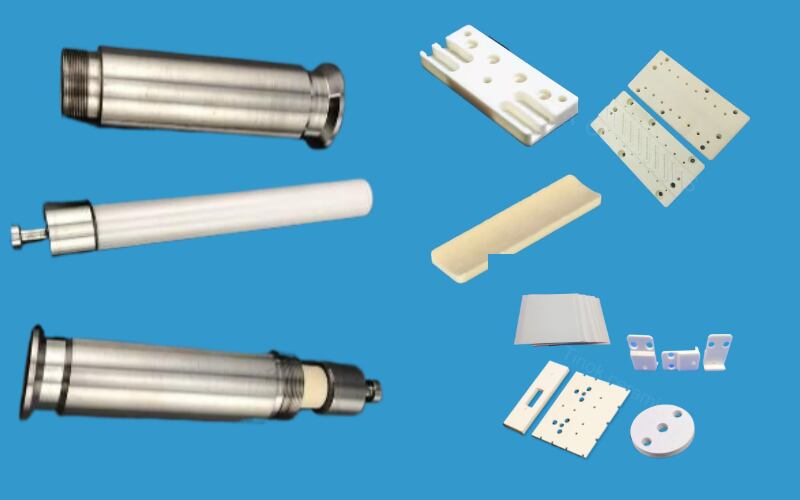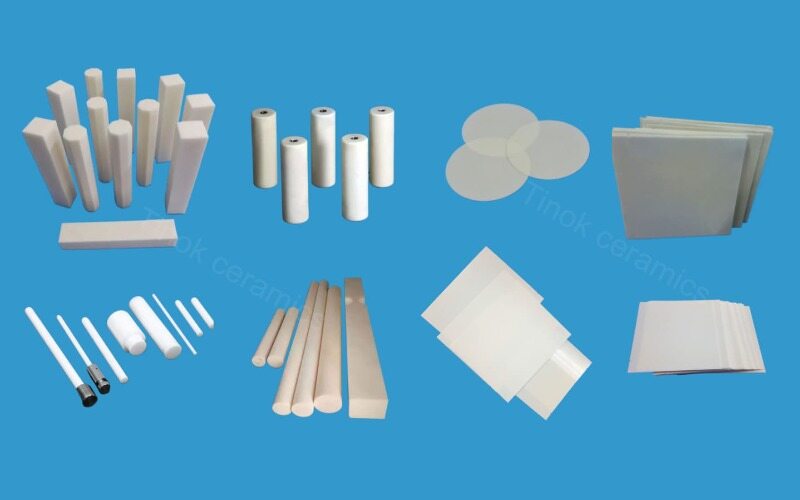All kinds of ceramic thermal expansion coefficient
Ceramics are widely used in industrial manufacturing and scientific research, and the properties and characteristics of different ceramics are different. Thermal expansion coefficient is an important parameter to measure the change of ceramic thermal expansion, and the thermal expansion coefficient is different for different ceramics.

The thermal expansion coefficient of various ceramics
1. Alumina ceramics: Alumina ceramics is a widely used high temperature material, its thermal expansion coefficient is about 8.2×10-6/ C.
2. Zirconia ceramics: Zirconia ceramics have excellent mechanical properties and chemical stability, and its thermal expansion coefficient is about 10.5×10-6/ C.
3. Boron oxide ceramics: boron oxide ceramics have the characteristics of high temperature resistance, corrosion resistance and flame retardant, and its thermal expansion coefficient is about 4.5~5.3×10-6/ C.
4. Silica ceramics: silica is a common ceramic material, and its thermal expansion coefficient is about 0.5×10-6/ C.
5. Silicon carbide ceramics: silicon carbide ceramics have excellent high temperature strength and hardness, and its thermal expansion coefficient is about 4~5×10-6/ C.
How to choose the appropriate ceramic material
Different application scenarios require different properties of ceramic materials, and the requirements for thermal expansion coefficient are also different. In the selection of ceramic materials, the manufacturing process of the material, the characteristics of the material, the application environment and other factors should be fully considered. For applications requiring higher coefficient of thermal expansion, silica ceramics with smaller coefficient of thermal expansion can be selected. For scenes with relatively low requirements for the coefficient of thermal expansion, zirconia ceramics with large coefficient of thermal expansion can be selected.

Thermal expansion coefficient of various ceramics
1. Silicon carbide
Silicon carbide has the advantages of high hardness, high temperature strength, corrosion resistance, etc., and is widely used in ceramic tools, friction materials, electronic packaging and other fields.
2. Aluminum tetroxide ceramics
Aluminum trioxide ceramics have excellent mechanical properties and high temperature stability, and are widely used in aviation, chemical industry, mechanical and electrical fields.
3. Alumina ceramics
Alumina ceramics have good insulation properties and high wear resistance, and are widely used in electronic packaging, magnetic recording materials, aviation and other fields.
4. Silicon nitride ceramics
Silicon nitride ceramics have the characteristics of high heat resistance, high hardness, corrosion resistance, etc., and are widely used in mechanical seal, aerospace and other fields.
5. Semiconductor ceramics
Semiconductor ceramics are widely used in microelectronics, optoelectronics and other fields because of their good dimensional stability and low dielectric constant.
6. Boron nitride ceramics
Boron nitride ceramics have the advantages of high hardness and high thermal conductivity, and are widely used in tools, abrades, heat scattering coatings and other fields.
7. Titanium nitride ceramics
Titanium nitride ceramics are widely used in electronic, information, energy and other fields because of their excellent electrical conductivity, magnetic and optical properties.
Order of expansion coefficient of ceramic materials
According to the experimental determination, the following is the expansion coefficient of some commonly used ceramic materials:
1. Silicon carbide: 4.1 × 10^-6 ℃^-1
2. Aluminum tetroxide ceramics: 7 × 10^-6 ℃^-1
3. Alumina ceramics: 8 × 10^-6 ℃^-1
4. Silicon nitride ceramics: 4.6 × 10^-6 ℃^-1
5. Semiconductor ceramics: 3.5 × 10^-6 ℃^-1
6. Boron nitride ceramics: 2.4 × 10^-6 ℃^-1
7. Titanium nitride ceramics: 1.1 × 10^-6 ℃^-1
In summary, the coefficient of thermal expansion is an important parameter to measure the thermal expansion properties of ceramic materials, and the coefficient of thermal expansion of different ceramics is also different. When selecting the appropriate ceramic material, the application scenario and material characteristics should be fully considered, and the most suitable ceramic material should be selected